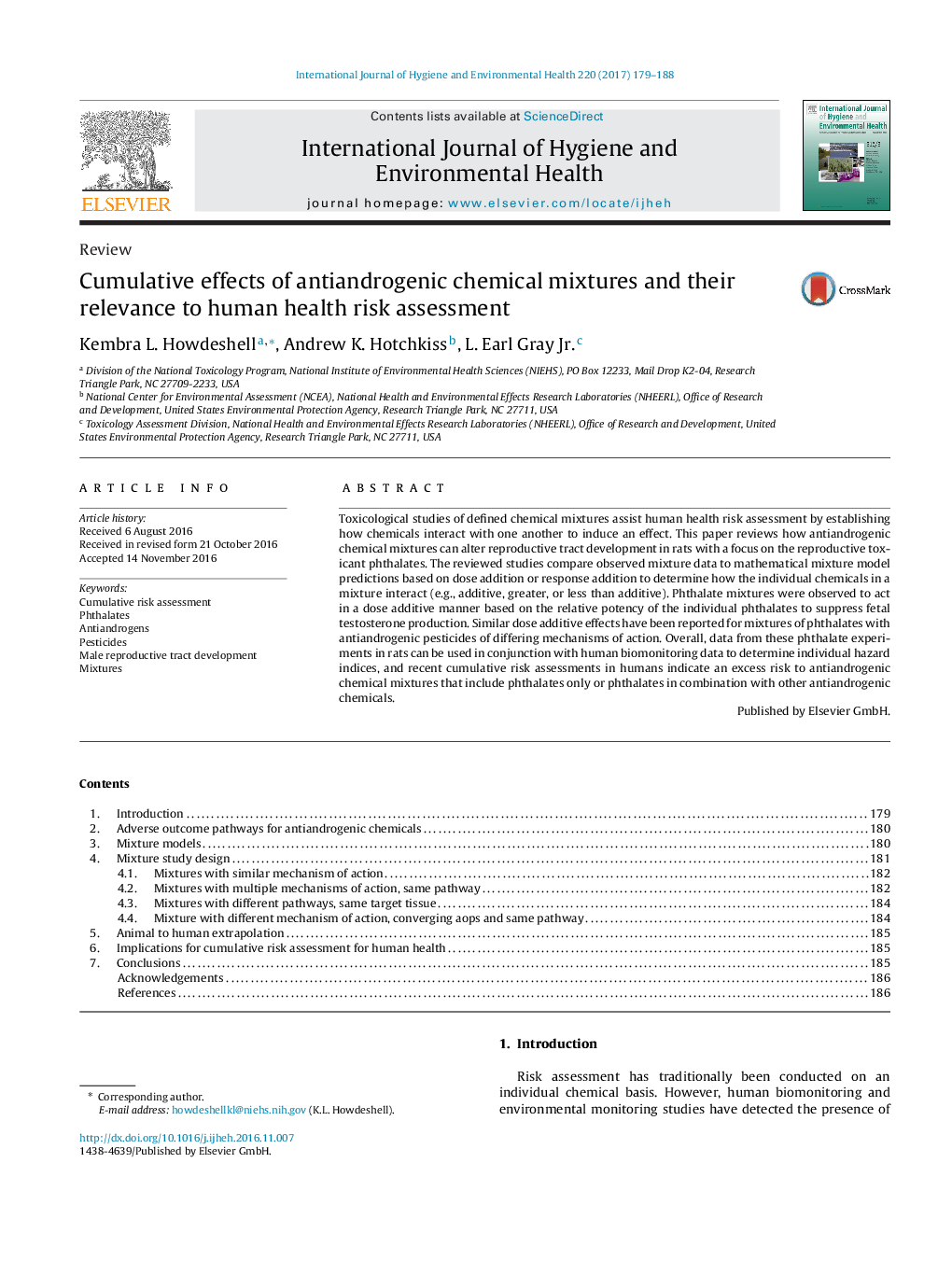| Article ID | Journal | Published Year | Pages | File Type |
|---|---|---|---|---|
| 5560541 | International Journal of Hygiene and Environmental Health | 2017 | 10 Pages |
â¢Many chemicals disrupt androgen-sensitive male reproductive development in the rat.â¢Mixtures of antiandrogenic chemicals act via dose addition, regardless of mechanism.â¢Cumulative risk assessments report a HIâ>1 for phthalates with other antiandrogens.
Toxicological studies of defined chemical mixtures assist human health risk assessment by establishing how chemicals interact with one another to induce an effect. This paper reviews how antiandrogenic chemical mixtures can alter reproductive tract development in rats with a focus on the reproductive toxicant phthalates. The reviewed studies compare observed mixture data to mathematical mixture model predictions based on dose addition or response addition to determine how the individual chemicals in a mixture interact (e.g., additive, greater, or less than additive). Phthalate mixtures were observed to act in a dose additive manner based on the relative potency of the individual phthalates to suppress fetal testosterone production. Similar dose additive effects have been reported for mixtures of phthalates with antiandrogenic pesticides of differing mechanisms of action. Overall, data from these phthalate experiments in rats can be used in conjunction with human biomonitoring data to determine individual hazard indices, and recent cumulative risk assessments in humans indicate an excess risk to antiandrogenic chemical mixtures that include phthalates only or phthalates in combination with other antiandrogenic chemicals.
